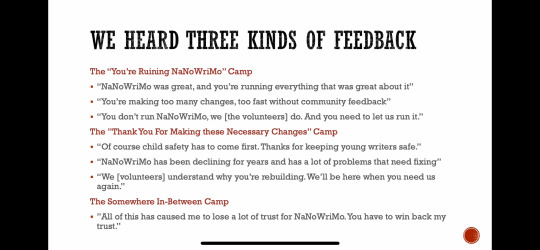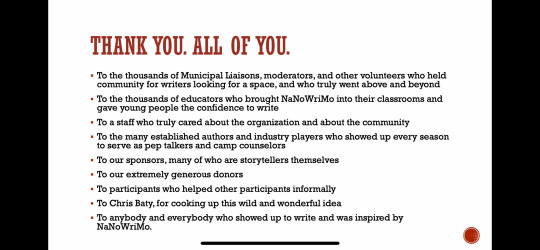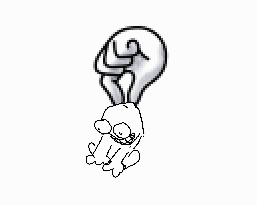writing tips, advice and memes
Last active 60 minutes ago
Don't wanna be here? Send us removal request.
Note
Are all the themes in “in other lands” supposed to be a commentary on something? Or do you just like writing sex scenes between minors, age gaps, and reverse misogyny?
Genuine question.
Ohhh, my dear anon, I don't believe this is a genuine question.
But it does bring up something I've been meaning to talk about. So I'll take the bait.
Firstly. Yes, my work contains a commentary on the world around us. I wonder what I could be doing with the child soldiers being sexually active in their teens (people hook up right after battles), and the age gap relationship ending in the younger one being too mature for the elder. What could I possibly have been attempting when I said 'how absurd gender roles are, when projected onto people we haven't been accustomed by our own society to see that way'? I wasn't being subtle, that's for sure.
Secondly. Yes I do enjoy writing! I think I should, it's my life's work. Am I titillated by my own writing, no - though I think it's fine to be. The sex scenes of In Other Lands aren't especially titillating, to be honest. It is interesting to me how often people sneer at women for writing romance and sex scenes, having 'book boyfriends,' insinuating women writers fancy their own characters. Women having too much immoral fun! Whereas men clearly write about sex for high literary purposes.
… I have to say from my experience of women and men's writing, I haven't found that to be true.
I’m not in this to have an internet argument. Mostly people use bad faith takes to poke at others from the other side of a screen for kicks. But I do know some truly internalise the attitude that writing certain things is wrong, that anyone who makes mistakes must be shunned as impure, and that is a deeply Victorian and restrictive attitude that guarantees unhappiness.
I've become increasingly troubled by the very binary and extreme ways of thinking I see arising on the internet. They come naturally from people being in echo chambers, becoming hostile to differing opinions, and the age-old conundrum of wanting to be good, fearing you aren't, and making the futile effort to be free of sin. It makes me think of Tennyson, who when travelling through Ireland at the time of the Great Famine, said nobody should talk about the 'Irish distress' to him and insisted the window shades of his carriage be shut as he went from castle to castle. So he wouldn't see the bodies. But that didn't make the bodies cease to be.
In Les Mis, Victor Hugo explores why someone might steal, what that means about them and their circumstances, and who they might be - and explores why someone else is made terribly unhappy, and endangers others, through their own too rigid adherence to judgement and condemnation without pity. The story understands both Jean Valjean the thief and Javert the policeman. Javert’s way of thinking is the one that inevitably leads to tragedy.
Depiction isn't endorsement. Depiction is discussion.
Many of my loved ones have had widely varying relationships to and experience of sex (including 'none'). They've felt all different types of ways about it. If writing about them is not permissible, I close them out. I'd much rather a dialogue be open than closed.
I do understand the urge to write what seems right to others. I've been brain-poisoned that way myself. I used to worry so much about my female characters doing the wrong things, because then they'd be justly hated! Then I noted which of my writer friends had people love their female characters the most - and it was the one who wrote their female characters as screwing up massively, making rash and sometimes wrong decisions. Who wrote them as people. Because that's what people do. That's what feels true to readers.
I want my characters to feel true to readers. I want my characters to react in messy ways to imperfect situations. I love fantasy, I love wild action and I love deep thought, and I want to engage. That's what In Other Lands is about. That's even more what Long Live Evil is about. That sexy lady who sashays in to have sexy sex with the hero - what is her deal? Someone who tricks and lies to others - why are they doing that, how did they get so skilled at it? What makes one person cruelly judgemental, and another ignore all boundaries? What makes Carmen Maria Machado describe ‘fictional queer villains’ as ‘by far the most interesting characters’? What irritates people about women having a great time? What attracts us to power, to fiction, and to transgression?
I don’t know the answers to all those questions, but I know I want to explore them. And I know one more thing.
If the moral thing to do is shut people out and shut people up? Count me among the villains.
2K notes
·
View notes
Text
The thing nobody tells you about writing is that you have to keep fucking doing it
4K notes
·
View notes
Text
idk who needs to hear this but when your english teacher asks you to explain why an author chose to use a specific metaphor or literary device, it’s not because you won’t be able to function in real-world society without the essential knowledge of gatsby’s green light or whatever, it’s because that process develops your abilities to parse a text for meaning and fill in gaps in information by yourself, and if you’re wondering what happens when you DON’T develop an adult level of reading comprehension, look no further than the dizzying array of examples right here on tumblr dot com
210K notes
·
View notes
Text
Not “Only my reading of canon is correct” or “Interpretations are subjective and all valid” but a secret third thing, “More than one interpretation can be valid but there’s a reason your English teacher had you cite quotes and examples in your papers, you have to have a strong argument that your interpretation is actually supported by the text or it is just wrong and I’m fine with telling you it’s wrong, actually.”
62K notes
·
View notes
Text

Can't believe NaNoWriMo just did this, but literally.
9K notes
·
View notes
Text
So Nanowrimo is actually dead.
After 25 years of operation, Nanowrimo is shutting down.
An email came out in the hours approaching April Fools







A video was attached to the email, which can be viewed here:
youtube
The video is on Kilby’s channel and not the long dead Nanowrimo channel. The video is full of…


Kilby logic, but there is some relevant information contained within.

If have anything on Nanowrimo you need to get off the site, take it now. The site will likely not be around for too much longer.
Despite everything that the organisation has been through, the closure of a 25 year old nonprofit is still a tragedy, and my heart goes out to everyone that’s grieving from this. Nano has hurt a lot of people, but it meant a lot to so many, and I will be sorry to see that go.
Even if I don’t agree with many things in the recent video, I can agree with the sentiment of one slide.

I will update you all if and when relevant information comes out. Despite everything, I now doubt that this will be my last post.
3K notes
·
View notes
Text
Every writer has that one story that they don't even intend to write down anymore, but that is forever stuck in their brain.
8K notes
·
View notes
Text
Devastating to have more evidence that done IS better than perfect
40K notes
·
View notes
Text
The devastating difference between how much time it takes to write something vs how fast people read it lol
107K notes
·
View notes
Text
realizing i am essentially a god presiding over my creations. and i choose to put them in chaotic situations. anyways heres me picking one up

24K notes
·
View notes
Text
now say it with me: authors/artists dont owe you moral purity. an author/artist job is not to hold you by the hand & tell you exactly what is Good™ & what is Bad™. you should be able to think for yourself
32K notes
·
View notes
Text
writing tip: searching "[place of origin]ish names" will get you a lot of stuff and nonsense made up by baby bloggers.
searching "[place] census [year]" will get you lists of real names of real people who lived in that place.
37K notes
·
View notes
Text
Author rant incoming, but I don't know what pisses me off more: lazy assholes who act like they're 'the real deal' because they have an AI make a book or story for them.
Or actual authors who have no class solidarity & use AI slop for their covers.
I can't be the only one who gets pissed at that. There is just so much here to say about how little solidarity there is between different types of creatives, how easily one group will get rid of another because they can save up on money or they already get most of the money. The recent strikes for actors and animators are proof enough that some people got theirs so they don't care about other creatives.
But as a writer who's dirt poor & STILL would never consider using AI for a book cover, I can't help but be bloody disappointed in these people.
It's like that adage of 'if you couldn't be bothered to make it, why should I be bothered to consume it?' Except it's 'if you couldn't be bothered to support a fellow creative, why should I support you?'
1K notes
·
View notes
Text
Becoming a writer is great because now you have a hobby that haunts you whenever you don’t have time to do it
57K notes
·
View notes


